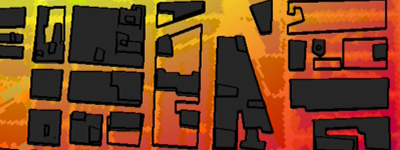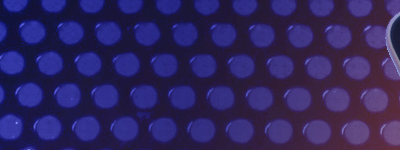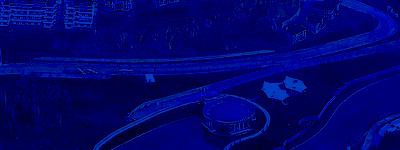EDX software provides a library of propagation models that cover frequencies 30MHz up to 100GHz. These models may be selected from to perform calculations of path loss, received power or field strength. Depending on the frequency, type of service, data available as well as the experience of the engineer, some models are more appropriate than others.
SignalPro and it’s associated modules contain physical, empirical, hybrid, in-building and ray-tracing models. The below provides an introduction to each prop model available.
For help determining which model is best for your use-case, book a customer success session here:
3GPP Empirical 5G Model
This model is based on the 3GPP TR 38.900 v14.2.0 technical report (Dec 2016) as found in chapter 7 of that report. The model is an empirical one in that specific terrain, structure and clutter obstacles are not taken into account in calculating path loss. This approach is similar to the Okamura-Hata model, however, a distinction is made between line-of-sight and non-line-of-sight paths (NLOS) where each type of path uses its own path loss equation.
This model contains several “Model types” that the user chooses to typify the type of environment in which his study is performed. This scenario is selected in the Supplementary Parameters dialog for this Propagation Model type. The scenarios are:
- Rural Macro (RMa) – The rural deployment scenario focuses on larger and continuous coverage. The key characteristics of this scenario are continuous wide area coverage supporting high speed vehicles and a recommended upper frequency limit of 7GHz.
- Urban Macro (Uma) – An Urban deployment using macro coverage sites spaced approximately 500m
- Urban Micro – Street Canyon (UMi) – An Urban street canyon deployment using micro cells spaced approximately 200m. Average building height and street width are adjustable parameters.
- Indoor Hotspot – Office (InH:Office) – Indoor office coverage from indoor base stations
- Indoor Hotspot – Shopping Mall (InH:Shopping mall) – Indoor shopping mall coverage from indoor base stations
- Custom – This is a user-defined mode for path loss of the form shown where a,b,c are user-defined parameters.
Anderson 2D
The Anderson 2D model is a basic physical model that uses traditional ray techniques to calculate path loss. Like most models, for a given transmitter-receiver pair, it first determines if the path is line-of-sight (LOS) or non-line-of-sight (NLOS). Based on this determination, one of two calculation branches is used as described below:
Line-of-Sight Paths
For line-of-sight paths including those just to the point of a grazing obstruction, the path loss is determined using the base free space path loss equations with two additional loss factors. First, the path is evaluated to determine if any sub-path terrain feature impinges on the 0.6 first Fresnel zone. If any do, the one that most greatly obstructs the Fresnel zone is considered to cause additional path loss. The additional path loss ranges from 0 to 6 dB as a linear function based on the extent of the 0.6 first Fresnel zone that is obstructed. A 6 dB loss is thus introduced just at grazing which provides a smooth attenuation transition to paths which are just slightly obstructed.
For LOS cases, an explicit consideration of a ground reflection is also included. The ground reflection point is found by evaluating the angle of incidence from the transmitter and receiver to each point on the intervening terrain profile. Where the angles are equal, or at the two adjacent profile points where the angle to the transmitter and receiver cross (the former becomes smaller than the latter), the section of the profile where the reflection point exists is determined. Linear interpolation based on the angles of incidence is then used to exactly establish the reflection point location on this profile segment. Once established, tradition specular reflection coefficients are calculated and the amplitude and phase on the ground reflection vectorially added to the direct ray. The contribution of the reflection can cause the net signal at the receiver to be greater or less than the free space signal level. Practical limits on the path loss change due the reflection are set at 25 dB (additional loss due to phase cancellation) and -6 dB (less loss due to in-phase addition of the reflection). Explicit consideration of the reflection in this way for flat or smooth earth paths is quite accurate. Note that depending on the path geometry, a reflection contribution may not necessarily exist (in reality) or be found by the model.
Obstructed Paths
For obstructed paths, the diffraction attenuation is computed using the Epstein-Peterson approach extended to multiple knife edges, where the obstacles are basically established at the points where a “stretched string” between the transmitter and the receiver would touch the terrain profile. This is modified somewhat to deal with “false plateaus” anomalies in the terrain database. When the geometry finds obstacles at successive points along a terrain profile, the model replaces the successive string of obstacles with two knife-edge obstacles, one at the beginning and one at the end of the succession. The heights of these knife edges are set at the heights of the first and last points in the succession, respectively, which are often the same for the false plateau anomaly. This double knife edge construction will also be invoked for real plateaus of other flat smooth sections of the profile if they happen to represent an obstacle along the path between the transmitter and the receiver.
In addition to the diffraction loss, the terrain profile between the transmitter and the first obstacle and the last obstacle and receiver are evaluated to determine if there are any sub-path obstacles which impinge on the 0.6 first Fresnel zone for either path segment. If such obstacles exist, an additional loss of 0 to 6 dB is included in each case using the same approach described for the Line-of-Sight section above.
Okumura (Hata) Model
The Okumura method used in the program is actually a computer implementation of the Okumura method that was developed by Hata [7]. Okumura’s method was developed using measurement data taken at several frequencies in the Tokyo urban and suburban area. Selection of this method is therefore most appropriate for urbanized areas where the study distance is relatively short (less than 30 km), the effective transmit antenna height is less than 200 meters, the effective receive antenna height is less than 10 meters, and the terrain is relatively flat. Using this method for other circumstances or at greater distances may be inappropriate. With all Okumura (Hata) methods, you can select local area types Open, Suburban and Urban and have the appropriate Hata correction factors applied.
Hata-Extended/Epstein-Peterson Diffraction
This is a specialized model that is based on the Hata model described above. In order to extend both the frequency range, distance range, and base antenna height range, graphical methods were used to extrapolate the curves to frequencies of 30 to 1500 MHz, distance ranges up to 300 km, and base antenna heights of from 30 to 1000 meters.
Free Space + RMD Model
With the Free Space + RMD method, the excess path loss term XPL is calculated using terrain obstacle factors, variability factors, and urban and foliage loss factors, if selected. This model is the most appropriate to use for microwave path design, or area-wide system studies operating at microwave frequencies (such as MDS) where the receive sites are not random or mobile locations, but engineered receive sites with directional antennas.
ITUR-370 + RMD
The ITUR-370 + RMD method is similar to the FCC + RMD method except the propagation curve attenuation factor is derived from the ITU-R propagation curves in ITU-R Rec. 370-6 (1994) instead of from the FCC propagation curves. The applicable effective distance ranges for the FCC and ITU-R curves are also different. The FCC curves can generally be used effectively for distances ranging from 1 to 200 or 300 km. The ITU-R curves begin at 10 km and extend to 500 km. If you select the ITU-R + RMD method, at distances less than 10 km the program will default to using free space path loss. This will often result in anomalous field strength or received power results at the transition from free space to the ITU-R curves at the 10 km point, especially for low effective antenna heights. When using this method, antenna height above average terrain will automatically be limited to values between 37.5 and 1200 meters as constrained by the data on the ITU-R curves.
The ITU-R Rec. 370-6 actually provides three sets of curves for land, warm sea, and cold sea. All three curve sets are in EDX software. You could choose which curve set you use by clicking on Supplemental Model Parameters after selecting the ITUR+RMD method.
The out-of-range antenna height corrections, the delta H (terrain roughness) corrections, and antenna height-gain corrections for local area clutter types as set forth in 370-6 are also implemented.
FCC + RMD Model
If you select the FCC + RMD method, the excess path loss factor XPL will be determined in the same way as the Free Space + RMD method, except the path loss will be further increased (signal level decreased) by an amount in dB equal to the difference between the field strength value read from the FCC propagation curves in Part 73 (broadcast) or Part 22 of the FCC Rules and the free space path loss at the equivalent distance. In essence, by selecting this method you are including additional path loss based on the information found on the FCC curves. Since the FCC curves are empirically derived from measured data on a wide variety of paths (some of which included terrain obstructions as well as local clutter loss), the FCC + RMD may to some extent represent “double counting” of some terrain effects. This method may therefore be regarded as conservatively (under) estimating actual field strengths or received power levels. When using this method, antenna height above average terrain will automatically be limited by the program to values between 30.4 meters and 1523 meters as constrained by the FCC computer data files describing the propagation curves.
FCC-EDX Model
This method is the same as the FCC+RMD method except the XPL term is based solely on the FCC propagation curves – no consideration of diffraction and reflection (RMD) is included. As such, this method provides field strength calculations that exactly follow the FCC propagation curves in Parts 73, 22 and 90 of the FCC Rules. The data points picked off the curves and the interpolation algorithm to find values between these data points were developed by EDX for efficient storage and calculation speed. This model uses the R-6602 curves (also known as the “Carey curves”) for the frequencies 54-88, 88-108, 174-230, and 470-806 MHz. All other frequencies covered by this model based on the special methods and formulas outlined in the relevant section of the FCC rules.
Therefore to insure that desired method is being used, set the transmitter frequency to be within the desired frequency band. For example, if the frequency to be studied is 851MHz but the R-6602 curves are to be used, set the transmitter frequency to be between 470 and 806 MHz. Antenna gains need to entered as “dBd” units (gain with respect to a dipole). Note that the “9dB receiver height correction” is not implemented in this model. To have the field strength that is displayed include this correction, reduce the transmitter power by 9dB or add 9dB of “Misc Loss” to the transmitter antenna system.
FCC-FCC Model
This method is identical to the FCC-EDX except the data points describing the propagation curves and the interpolation algorithm to find values between points are taken directly from the FCC computer code. As such, there may occasionally be small differences in contour distances when using the FCC-EDX and FCC-FCC methods. If you want calculations that will exactly match calculations done by the FCC, use the FCC-FCC method. Note that this method applies only to the US broadcast frequencies (those covered by part 73 of the FCC Rules). Antenna gains need to entered as “dBd” units (gain with respect to a dipole).
FCC-Pt. 22 Model
The FCC-Pt. 22 method is the same as the FCC-EDX method except that certain field strength contour levels will invoke unique calculation formulas required by the FCC Rules. Antenna gains need to entered as “dBd” units (gain with respect to a dipole).
FCC VHF Maritime Model
The FCC VHF Maritime model is similar to the FCC-EDX model except that it uses the specific propagation curves found in Part 80.751 and following sections of the FCC Rules. This model should only be used when the propagation studies being done are for FCC filings for VHF maritime stations.
TIREM-EDX Model
TIREM stands for Terrain Integrated Rough Earth Model, one of several propagation models in a propagation package developed by the National Telecommunications and Information Administration (NTIA) in conjunction with various branches of the US Department of Defense. This model is widely used in US government and military organizations as well as by private companies. The model is one of the more complex currently used; the description given below is only a very brief summary. More detailed information can be found in the references at the end of this appendix. The version of TIREM used by EDX is derived from the v3.19 model as defined by the Electromagnetic Compatibility Analysis Center (ECAC).
Basically, TIREM considers each path and makes an initial decision on whether it is “line-of-sight” (LOS) or obstructed. Based on this decision it uses one of two approaches to find path loss. In the LOS mode, it calculates the degree of obstruction of the Fresnel zone and uses this to proportionally adjust the amount of additional path loss (over free space path loss) which results from one of two propagation loss models. For frequencies above 200 MHz, the Longley-Reasoner model is used. For frequencies below 150 MHz, the Longley-Rice model is used. At frequencies in between 150 and 200 MHz, the losses calculated from the two methods are proportionally averaged. The attenuation calculated by the methods is adjusted by the degree of path clearance over the terrain. If the path clearance is less than 0.5 Fresnel zone radius, 100% of the attenuation is used. If the clearance is greater than the 1.5 Fresnel zone radius at all points, no additional attenuation is applied from these methods, only basic free space path loss is used. At clearances in between 0.5 and 1.5 Fresnel zone radii, the additional path loss is a linear proportion between 0 and 100 percent.
In the LOS mode, TIREM also calculates what portion of the path is over smooth earth and what portion is over rough earth. If part of the path is over smooth earth, the path loss (on the entire path) is calculated using Bullington’s smooth earth path loss method. The loss for the smooth earth and rough earth (Longley-Rice or Longley-Reasoner) are proportionally combined based on the percentage of the path which is smooth and the percentage which is rough. In the NTIA implementation of TIREM, smooth earth is defined as elevations equal to zero (sea level) or some other smooth earth elevation (a lake surface, for example) which the user can define. In the EDX implementation of TIREM, only zero elevations (sea level) are considered to be smooth earth.
When the path is obstructed, TIREM uses a multiple knife-edge diffraction loss routine like that described under RMD in Section A.2.1. However, for paths where the average loss per obstacle is less than 10 dB, TIREM will calculate a smooth earth path loss (using the Bullington smooth earth algorithm mentioned above) and combine it proportionally with the loss found from the multiple knife-edge calculation. This method comes in to play for obstructed paths over the ocean where the horizon at each point can present a low angle obstacle. The EDX version of TIREM fully implements this approach for low angle multiple obstacles.
In the obstructed path case, TIREM also modifies path loss with a “height-gain” function that is based on the assumption that the rough terrain profile can be replaced with four circular arcs (earth radii). This is a tenuous assumption for most cases. For calculation efficiency, this element of the NTIA version of TIREM is not implemented in the EDX version.
Because of these implementation variations with respect to the TIREM offered by ECAC, the version in the EDX software is named “TIREM-EDX”.
ITU-R .P370-EDX Model
This method is the same as ITUR-370 except the XPL term is based only on the ITU-R propagation curves – no consideration of diffraction or reflection (RMD) is included.
ITU-R .P452 Model
This model is designed for prediction and evaluation of interference between stations on the surface of the earth at frequencies between 0.1 and 50GHz. Line-of-sight, diffraction and tropospheric scatter are the principle propagation mechanisms accounted for in this model.
ITU-R .P1546
This method is an expansion upon the ITU-R .P370 model. The basic attenuation is derived from a family curves such as in the ITU-R .P370 but a number of other correction factors are added. The applicable effective distance range begins at 1 km and extends to 1000 km. When using this method, the results from antenna heights above average terrain greater than 3000 meters are undefined.
This model provides three sets of curves for land, warm sea, and cold sea.
ITU-R .P1812 Model (TSB-88)
This model is taken from the ITU-R .P1812 Recommendation and implemented per the TIA-TSB-88.2 document as the “Electromagnet Wave Propagation Prediction Standard Model”. As in most ITU Recommendations, the implementation of the calculation methods is not completely described and EDX has chosen to use the TIA’s implementation.
COST 231-Hata Model
The COST 231-Hata model is a variation of the Hata model. This variation was developed to provide a model that could be used in the 1500-2000 MHz PCS frequency band.
Cutom Model
The custom model is based on COST 231-Hata model. It allows you to independently adjust each of the main parameters of the model so that the path loss predictions fit your own objectives such as matching a set of field measurement data.
Longley-Rice Model v1,2,2
The Longley-Rice model provided here is the point mode version of the model with corrections and improvements set forth is a memorandum written by George Hufford dated January 30, 1985. The corrected version has become know as v1.2.2.
Because the Longley-Rice model is rather complex, you are directed to the report:
“A Guide to the Use of the ITS Irregular Terrain Model in the Area Prediction Mode,” G.A. Hufford, et al., April, 1982. (NTIA Report 82-100, NTIS Access # PB82-217977)
https://www.ntia.doc.gov/report/1982/guide-use-its-irregular-terrain-model-area-prediction-mode
IEEE 802.16 (SUI)
These six models are used to assess propagation loss for fixed broadband wireless equipment in the 1.0 to 4.0 GHz spectrum where the paths are generally less than 10km with low (2-10m AGL) receive antennas and base transmitter heights of 15-40m AGL. The six Stanford University Interim (SUI) models represent typical terrain types found in the continental U.S. and are named SUI-1 through SUI-6. They are categorized as follows:
- Flat terrain with low-density trees (low delay spread – low doppler) SUI-1 and SUI-2
- Intermediate terrain (low delay spread – low doppler) SUI-3
- Intermediate terrain (moderate delay spread – high doppler) SUI-4
- Hilly terrain and heavy trees (high delay spread – low doppler) SUI-5
- Hilly terrain and heavy trees (high delay spread – high doppler) SUI-5
The various formulas and applied correction factors for the models are relatively involved and you are directed to the IEEE 802.16 “Channel Models for Fixed Wireless Applications” (2001) for complete information.
2D Structural Ray-Tracing Model
The 2D Structural Ray-Tracing model has a wide application for indoor and outdoor studies where it has been shown to produce results that closely match measurements. It is best suited to outdoor microcell situations where the base station antenna is located well below the surrounding building rooftops, or in a so called “urban canyon.” The 2D model also performs well for indoor situations with low height, absorbing ceilings where wall reflections are the primary cause of the higher amplitude rays arriving at the receiver.
When you select this model on the Studies/Propagation Model screen, another selection will appear called Supplemental model parameters. By selecting the supplemental parameter screen, you can enter a number of parameters that must be set before a ray-tracing study is done.
In the top box on this screen, you can enter the number of specular reflection and corner diffraction generations. You can also elect to include diffuse wall scattering rays, wall transmission, and rooftop diffraction rays.
When the ray-tracing model displays a power level on a graph or map, that power level is based on a spatial averaging of the fast-fading voltage envelope in the vicinity of the ray-tracing point. The range over which this averaging is done is called the spatial averaging distance. It is specified in wavelengths on the next line. Values from 0 to +10 wavelengths can be used.
When conducting a ray-tracing study, it is helpful to limit the number of building walls and corners that are included in the study to just those that are close enough to be relevant. The study radius entry lets you adjust this distance as necessary for your study. This radius should be set well beyond the service radius of the microcell because strong reflections from distant buildings can come back into the service area and have an important impact on the time dispersion at the receive point.
The ray threshold is a cutoff parameter. The maximum number of rays that can be included at an analysis point is 1000. Many more rays than that may be present so it is worthwhile to reject those that are so low in amplitude that they are not important. You can set this threshold to reject these low amplitude rays.
3D Structural Ray-Tracing Model
The 3D ray-tracing model is similar to the 2D ray-tracing model except the vertical or z-axis geometry is taken into account when determining illuminated walls and corners. The terrain elevation differences under buildings are also considered. The 3D ray-tracing model is a calculation-intensive model, which may take a long time to finish a study even on very fast PC’s. It should be used only when relative building elevations are important (the ground is relatively hilly over the extended service range of the microcell), or when the microcell base station antenna is elevated; for example, located on a building rooftop.
Use the supplemental model parameter screen to set reflection and diffraction generations and other detailed parameters. The rooftop diffraction selection is not relevant for the 3D model since such rays are inherently considered in 3D modeling.
Empirical COST Walfisch-Ikegami Model
The Walfisch-Ikegami is a hybrid model that has been specifically adapted to short range cellular and mobile applications within an urban environment.
EDX Simplified Indoor Model (ESIM)
The EDX Simplified Indoor Model was developed as a means of doing propagation studies in indoor environments making use of specific floor plan information without the computationally intensive and time-consuming effort involved in using a ray-tracing model for such studies. This model is intended to predict signal levels only, not time dispersion or delay spread which can only be done effectively by ray-tracing models. If you need time dispersion information, you must use a ray-tracing model.
3D Indoor Ray-Tracing Model
The 3D indoor ray-tracing model is similar to the 2D ray-tracing model except the vertical or z axis geometry is taken into account with the assumption that a floor surface exists at the base of all the walls and a ceiling surface exists at the top of all the walls. The wall heights must be uniform, so studies in indoor environments where the room heights vary substantially may not be appropriate.
Anderson Outdoor/Indoor Model
The Anderson Outdoor/Indoor propagation model is designed to calculate path loss between two points when either the transmitter end, the receiver end, or both ends are inside structures. It basically is an amalgamation of the Anderson 2D v1.00 model and the ESIM model with particular geometries applied to the path. This model is intended to be used for finding the potential for interference and overlapping coverage in macro cell/small cell heterogeneous networks (“hetnets”) which may include small cells inside structures.
Modified Short Range Hata Model
The Modified Short Range Hata model is based on Okamura and Custom models described earlier. It uses the basic Okamura-Hata path loss formula but also adds a free-space option for short distances as well as several options for clutter loss corrections. A significant difference between this and the Okamura/Custom models is that the average terrain height is always 0.0m (i.e. terrain data is not used by this model).








